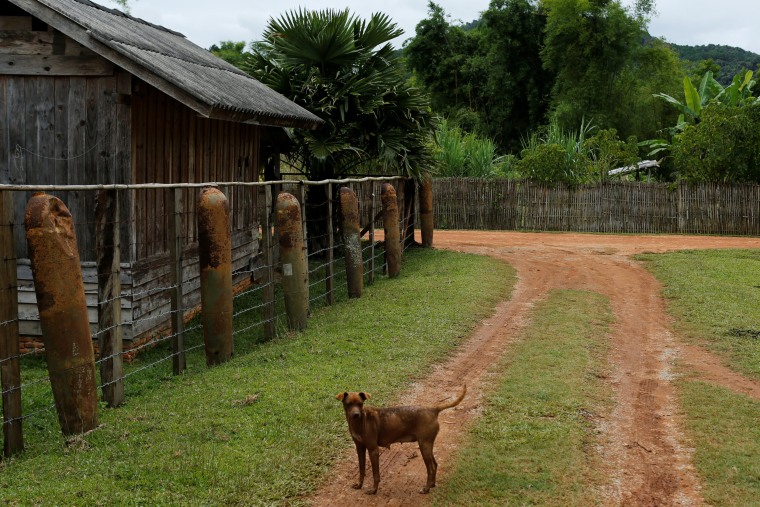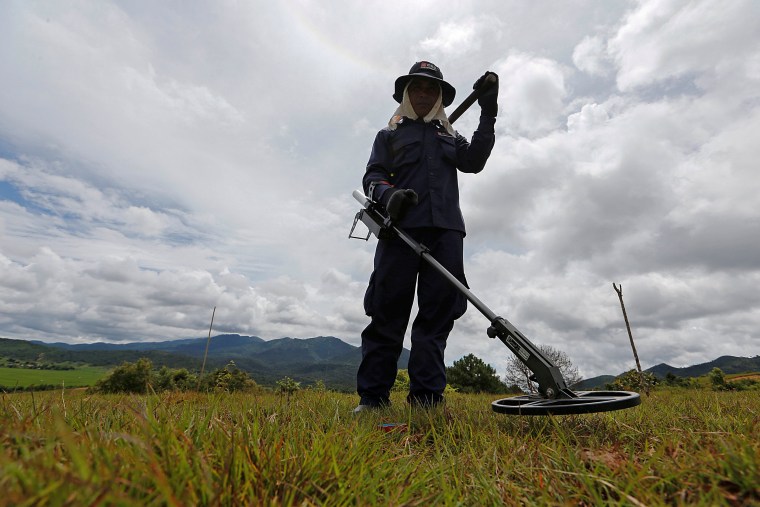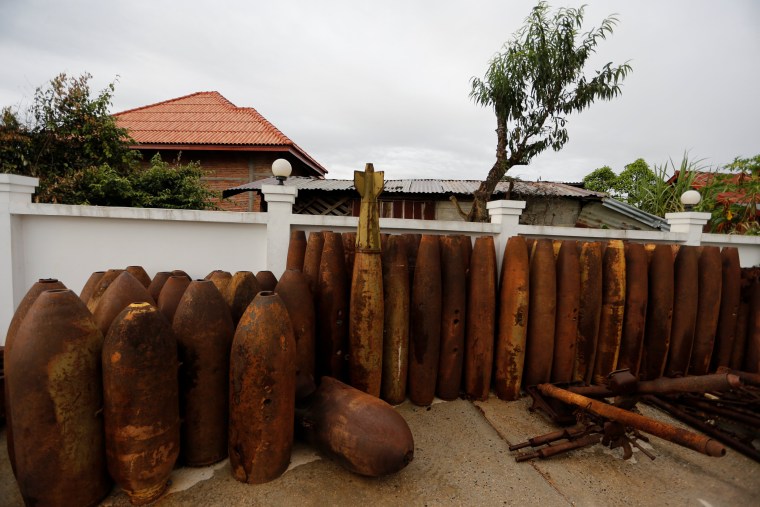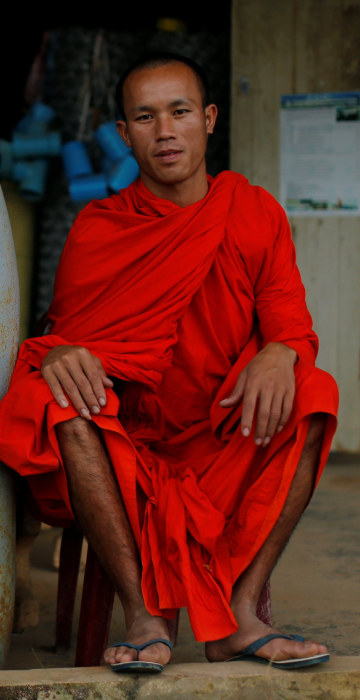
Photo
U.S. Bombs: Scars of Covert War Still Raw in Laos
For nine years, the U.S. conducted a covert campaign in Laos, making it the most heavily bombed country, per capita, in history.
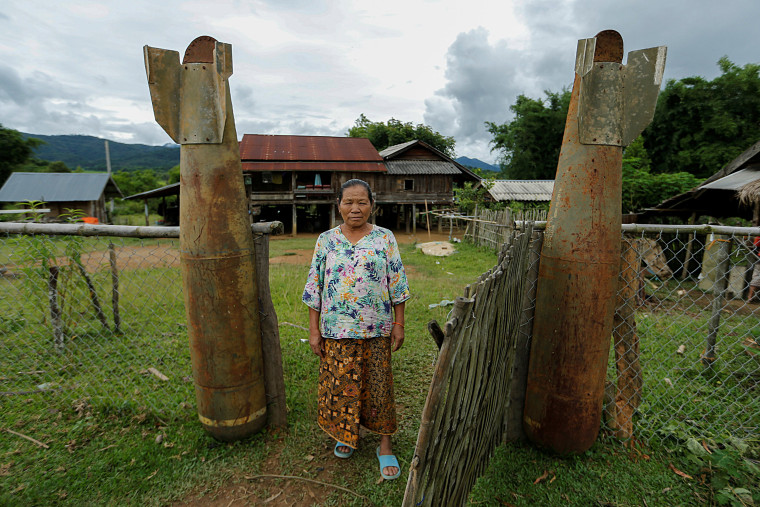
A woman stands outside her house at a gate made from bombs dropped by the U.S. Air Force during the Vietnam War in the village of Ban Napia, Laos, on Sept. 3.
From 1964 to 1973, U.S. warplanes dropped more than 270 million cluster munitions on the communist country, one-third of which did not explode, the Lao National Regulatory Authority for UXO says.
America's "secret war" left Laos with the unfortunate distinction of being the most heavily bombed country, per capita, in history.

Toui Bounmy Sidavong, 43, holds a bomb dropped by the U.S. Air Force in Ban Napia, Laos, on Sept. 3.
Druing his first visit to Laos, President Obama announced Tuesday that the U.S. would provide an additional $90 million over the next three years to help Laos clear unexploded ordnance that has killed or injured more than 20,000 people.
The U.S. bombardment dropped more than 2 million tons of ordnance on the small nation, more than "we dropped on Germany and Japan, combined, in all of World War II," Obama said.
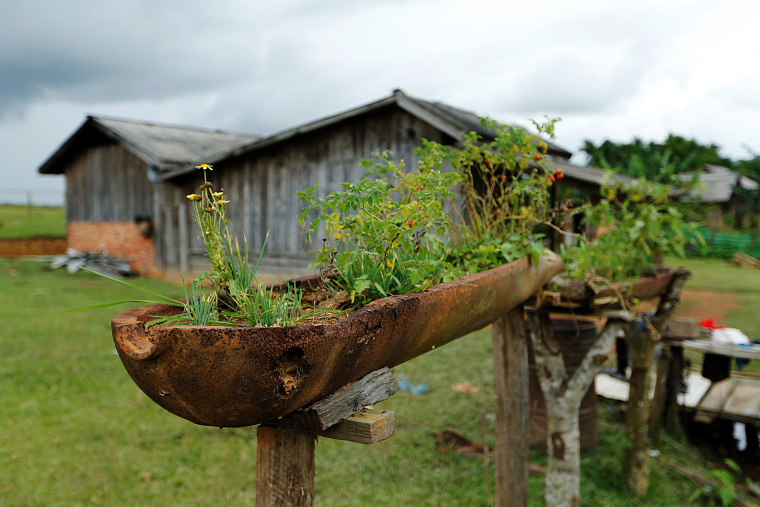
The remnants of a U.S. bomb are used as a planter in Ban Napia on Sept. 3.
The U.S. bombings were part of a CIA-run, secret operation aimed at destroying the North Vietnamese supply routes along the Ho Chi Minh trail and wiping out its communist allies.
They also left a trail of devastation in Laos, which U.S. planes used as a dumping ground for bombs when their original target was unavailable and planes couldn't land with explosives.
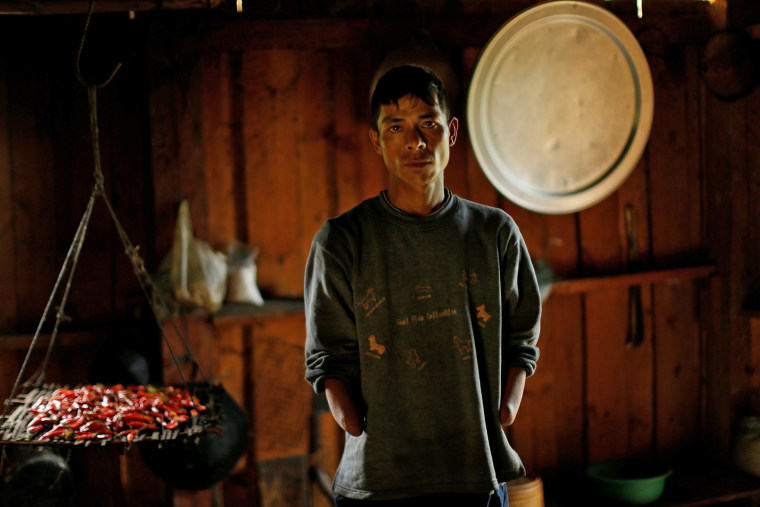
Kek, 28, who lost his hands five years ago to an unexploded U.S. bomb while scavenging for metal, poses in his house in Kakho, Laos, on Sept. 3.
While overall casualties have come down – in 2008 recorded casualties were just over 300 compared to 42 in 2015 – the percentage of children hurt or killed has gone up.

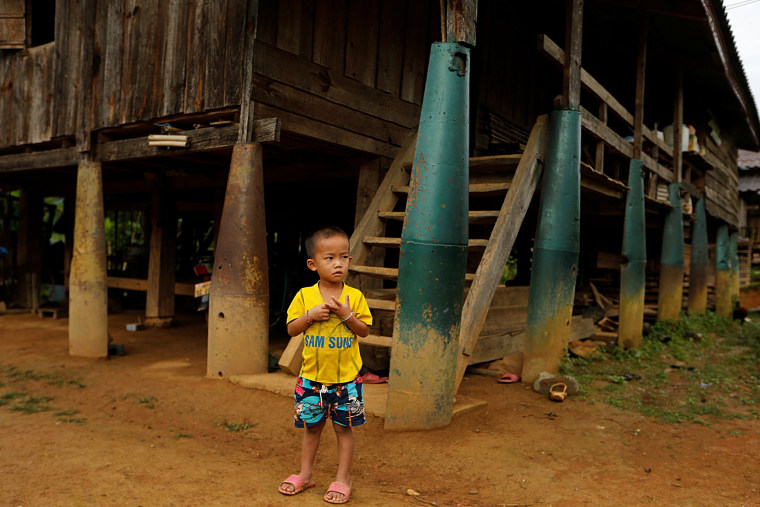
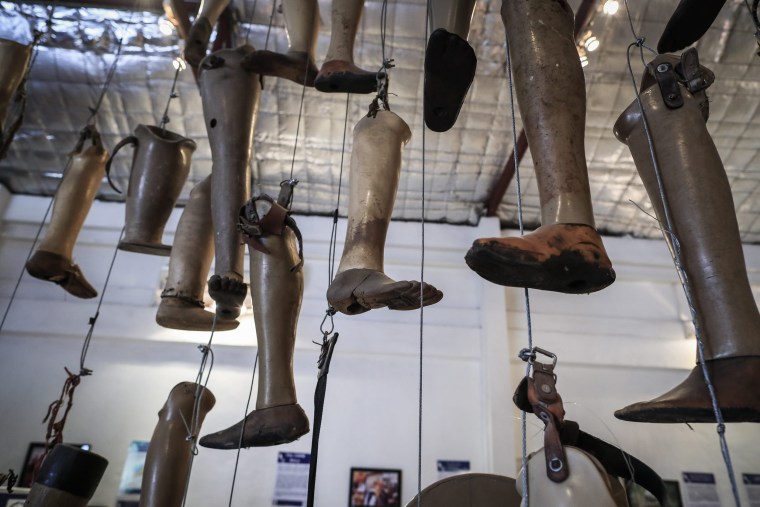
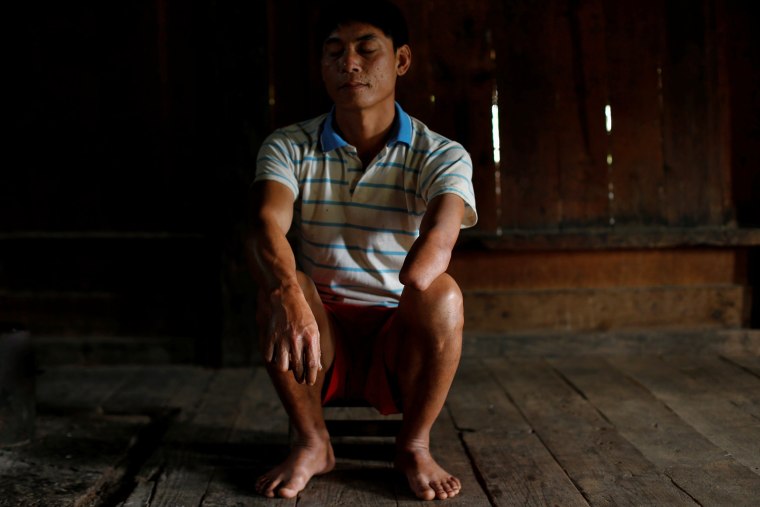
Soud sits in his house in Kakho, Laos, on Sept. 3.
Now 40 years old, Soud was 10 when, out farming with his family, his spade hit a bomb triggering an explosion that blinded and maimed him.
His mother, Thongsy, now 75, remembers the day vividly.
"I heard an explosion and then I saw my child lying there. The villagers helped carry him to the nearest hospital by foot. They had to cut off his hand. I was crying," she said.
